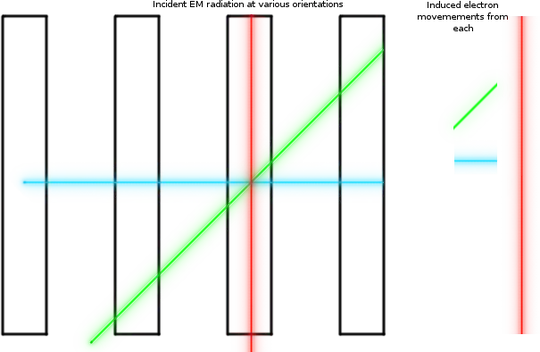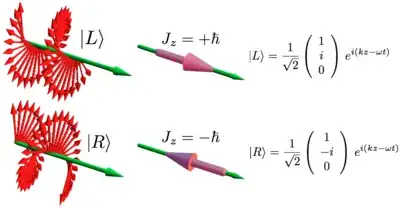When light is passed through two polarizers successively, its intensity and orientation afterwards depends on the angle between the polarizers and the orientation of the most recent polarizer, respectively.
Why is this the case? What is physically happening, in the most fundamental terms possible, between the electric field and the polarizers that makes the light oscillation change its orientation to that of the newest polarizer, and why is the new intensity governed by Malus's law?
Maybe to help communicate the intent behind my question, my original question was this:
Why is light not fully blocked by one vertical polarizer, one polarizer at 45° from the x axis and one horizontal polarizer, set up in that order?
By my mental model, only vertically oriented light passes through the first, then, of that light, only a limited amount (half, by Malus's law, though I don't understand how this works; see the paragraph below) should make it through the 45° rotated polarizer. Why is this light not still vertically polarized and unable to propagate through the horizontal polarizer?
I have trouble with the fact that any makes it through the 45° rotated polarizer at all. My mental construction of what light waves are must be quite flawed. I visualize light such that, were its oscillations of macroscopic size, they could be completely hidden behind a vertically oriented pencil. Trying to drop a pencil through a slit in a cardboard box would only succeed were the box slit of the exact orientation as the pencil. Could someone please explain to me the correct mechanics or give me a better analogy of this situation?
I then encountered this question. From it I can see what happens, but I don't understand why the polarizer makes light behave that way.
After reading the Wikipedia page on polarizers, as suggested by ACuriousMind, below is my current guess as to what's happening. Is this correct/close?
Instead of a box with a slit, imagine a sieve of wire with one component of the mesh removed, so every strand of wire is aligned (and all the perpendicular strands are gone). 'Passes through' is bad terminology: the light that propagates on the other side of the polarizer accompanies the magnetic field that arises from the movement of the electrons in each wire. Everywhere on this wire half sieve that the 'pencil' touches, electrons in the wire will vibrate with the same orientation.
If the incident polarized light is aligned with the wires in the sieve, the electrons in the wire will be able to move the greatest amount, moving along each wire's length. If it is perpendicular to the wires, electrons will only be able to move the width of the wire; the oscillations in the electric field this causes on the other side of the sieve/polarizer will therefore be minimal. If the light hits the sieve at an angle like 45°, the electrons will be able to move further than the horizontal width of the wire, so the intensity will be greater.
There must be some factor, a resistance in the wire, that limits electron movements, as the following diagram is clearly not correct for the red induced movement when the incident light is aligned. The width of the wire equivalent in the polarizers must be such that it limits electron movement much more than the wire's resistivity does (or the intensity left from perpendicular incident light wouldn't be much less than incident light at 45°).

